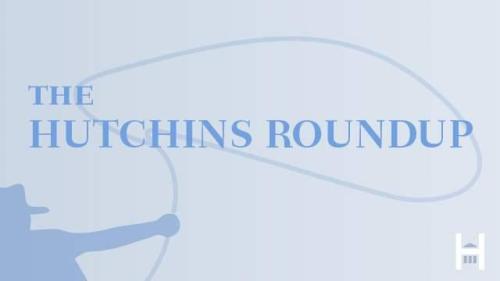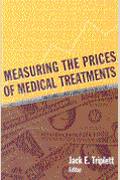Studies in this week’s Hutchins Roundup find that President Trump’s trade war led Republicans to lose seats in the House of Representatives, risk of interest rates hitting the effective lower bound in the future can lead to below-target inflation today and more.
Want to receive the Hutchins Roundup as an email? Sign up here to get it in your inbox every Thursday.
Republicans lost five House seats in 2018 due to Trump’s trade war
Emily Blanchard and Davin Chor of Dartmouth’s Tuck School of Business and Chad Bown of the Peterson Institute for International Economics find that President Trump’s tariffs and subsequent retaliation led Republicans to lose seats in the House of Representatives. Although there was no significant loss of Republican House vote share compared to 2016 due to U.S tariffs alone, Republican candidates lost more vote share in counties most affected by retaliatory tariffs. The losses were more concentrated in political swing counties where President Trump narrowly lost in 2016, and in counties hit harder by retaliatory tariffs on agricultural products, particularly those imposed by China. They estimate that voters’ response to the trade war could account for 10% of the decline in Republicans’ nationwide House vote share and a loss of five House seats in 2018. Republicans also fared worse in counties that had seen recent gains in health insurance, and that cost them eight seats.
Risk of interest rates hitting lower bound in future can lead to below-target inflation today
The possibility that a central bank cannot push rates much below zero can reduce inflation today even if rates aren’t at the effective lower bound because economic agents are aware of the risk of hitting the ELB in the future. In a model calibrated to match key features of the U.S. economy, Timothy Hills of New York University, Taisuke Nakata of the Federal Reserve Board, and Sebastian Schmidt of the European Central Bank find that the steady state of inflation when agents are aware of ELB risks is 0.25 percentage point below the 2 percent inflation target. While the standard policy rule suggests that the Fed’s interest rate target should be 3.75% to achieve the 2% inflation target, the authors estimate that taking in account the risk of hitting the effective lower bound in the future suggests that the optimal rate is 3.24%.
European inflation can be explained by the Phillips curve
According to many economists, European inflation over the past decade has not responded to the level of economic slack in the way predicted by the Phillips curve–the negative relationship between the unemployment rate and inflation. Inflation was too high during the recessions of 2008 and 2011, and too low during the subsequent recovery. Laurence Ball of Johns Hopkins University and Sandeep Mazumder of Wake Forest University argue that the conventional measure of core inflation, which excludes food and energy prices, is too volatile, because many other industries also experience large transitory price shocks. Using the weighted median of industry inflation rates, which adjusts for relative price changes in 94 industries but is less volatile than the conventional measure, they find that fluctuations in European inflation are well explained by the Phillips Curve. The authors conclude that economists should pay more attention to the weighted median when examining inflation behavior.
Chart of the week:
 Source: Wall Street Journal
Source: Wall Street Journal
Quote of the week:
“Although there is substantial uncertainty surrounding how or when shifts in asset valuations might occur, we can begin to identify the factors that could propagate losses from natural disasters, energy disruptions, and sudden shifts in the value of climate-exposed properties. As was the case with mortgages before the financial crisis, correlated risks from these kinds of trends could have an effect that reaches beyond individual banks and borrowers to the broader financial system and economy. As with other financial stability vulnerabilities arising from macroeconomic risks, feedback loops could develop between the effects on the real economy and those on financial markets. For example, if prices of properties do not accurately reflect climate-related risks, a sudden correction could result in losses to financial institutions, which could in turn reduce lending in the economy. The associated declines in wealth could amplify the effects on economic activity, which could have further knock-on effects on financial markets,” says Lael Brainard, Governor at the Federal Reserve Board.
“Beyond these physical risks, policymakers in some jurisdictions are assessing the resilience of the financial system to so-called transition risks: the risks associated with the transition to a policy framework that curtails emissions. […] Although this work is at an early stage, thousands of companies around the world are now reporting climate-related financial exposures to the Carbon Disclosure Project (CDP) under the guidelines of the Financial Stability Board (FSB) Task Force on Climate-Related Financial Disclosures (TCFD). Based on these disclosures, the CDP estimates that the 500 largest companies by market capitalization are exposed to nearly $1 trillion in risk, half of which is expected to materialize in the next five years.”
The Brookings Institution is committed to quality, independence, and impact.
We are supported by a diverse array of funders. In line with our values and policies, each Brookings publication represents the sole views of its author(s).











Commentary
Hutchins Roundup: Trump’s trade war, risk of effective lower bound, and more
November 14, 2019